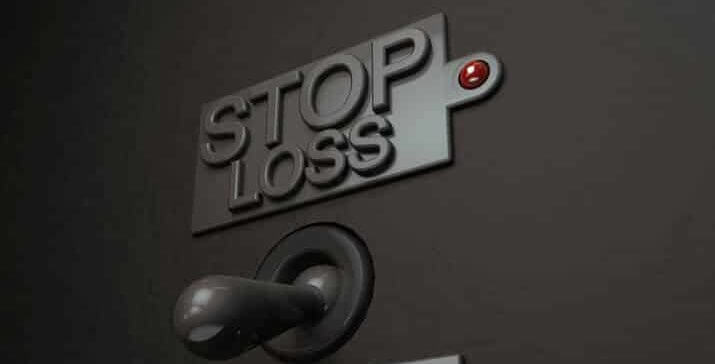
Trading Without a Stop Loss and Why Stop Loss Don’t Work
Have you ever thought about how trading without stop loss works? What lies behind actual Forex trading without stop-loss nowadays, and what are these crucial steps you’ll need to know to master trading without a stop loss? Let’s see.
First of all, before you get to know how you can do trading without a SL (stop loss) without any negative consequences, it’s essential to get to know what the SL is. Once you understand its meaning and importance, you’ll realize how you can do the trading without stopping loss.
Let’s find out the true meaning of it, shall we?
The explanation of the stop-loss – Get essential information
Traders place stop-losses either to protect a portion of existing profits in one trading position or to limit risk. In addition to that, placing a stop-loss order is commonly offered as one of the options through a trading platform whenever a trader sets a trade.
SL can be modified at any time a trader wants. It ultimately activates a market order when a price threshold is caused. For example, let’s say you’ve managed to purchase Microsoft at $20 per single share. Immediately after buying a stock, you enter a stop-loss order for $18.
What can you expect in case the stock goes below $18?
If the stock goes below $18, you can expect your shares to be sold at the prevailing market price. Stop-loss orders are very similar to stop-limit orders. Nonetheless, we can see that stop-limit orders have limits on the price at which they’ll execute. There are two prices in a stop-limit order: stop price will convert to sell order and the limit price.
So, instead of the stop-loss order to be a market order to sell, it’s crucial to understand the sell order will become a limit order that will execute at, what happens to be, the limit price – or even better than that.

When do traders place stop-loss orders?
Generally, traders place stop-loss orders once they initiate trades. Initially, traders used stop-loss orders to limit potential losses from one particular trade. For instance, one Forex trader can enter an order to purchase EUR/USD at 1.5000, along with a SL order that’s placed at 1.14685.
Therefore, it would limit the trader’s risk of trading loss to a significant 15 pips.
Is it possible to do trading without a stop loss?
Before all, the question of whether trading is possible without a stop loss, the answer is, of course, it is possible. A significant number of traders are struggling with deciding where to place their SL. This may be a sign of you being on a slippery slope to Stop out.
Even though many traders are constantly told to follow their trading plan, and that trading without a stop loss can be very “damaging,” it’s clear that you can afford yourself some leniency. Markets swing up and down every day and night.
Using no stop loss trading methods are, without a doubt, risky. Nonetheless, we’ll explain to you when it is a good time for you to do trading without a stop loss, when it comes to your Forex strategy, and how you’re able to overhaul your approach to using Stop Losses.
Why do traders avoid using stop-loss orders?
Trading without stop loss can be viable. There are several reasons why traders aren’t using stop-loss orders. First of all, speaking of traditionally more volatile pairs, it can be that those fluctuations can trigger the SL order prematurely, inflicting particular losses on the trader’s account, just so to reverse to its initial level.
Therefore, the stop-loss order kicks in and then closes the trade. This is before it even has a chance to become profitable and provide traders with some profits. Another reason is simply a psychological one.
Some traders might have a false sense of security by using these orders since their losses are limited. Thereupon, they’ll be laxer when it comes to analyzing their currency pairs and more careless in their decision making.
How to do trading without a stop loss in the best way?
To do trading without a stop loss, a trader must use a No SL Forex strategy or Forex trading without a losing money. Forex can be traded without a stop loss while still using proper risk management through hedging. If traders aren’t using a stop loss, they can avoid being stopped by volatile market conditions and rollover.
Even though, for most traders, a stop loss is the best way to manage risk, these traders like the flexibility that hedging can provide to them. You must learn to be an independent thinker. As well as, understand that it’s not always the case that you need to stop losses to protect yourself from risks.
You are also able to limit risks without a stop loss. Remember that hedging is the best way for trading without stopping loss while maintaining the proper risk management.
What are the best techniques for trading without a stop loss?
Even though you can do swing trading without SL, and day trading without SL, we advise you to consider the following techniques that will provide you with much greater success while trading without a stop loss:
- The spread trading – Is the difference between the bid/sell price and the ask/buy price of one particular currency pair.
- Call option – It is when buyers, usual companies, have the right to choose whether they’ll buy foreign currency at a predefined exchange rate in the contract or not.
- Time stop – Time stops represent stops you set based on a predetermined time in a single trade.
- No leverage – In Forex, “no leverage” refers to a strategy in which an investor borrows money to invest in a particular financial product so that he’ll be able to increase the potential return of an investment.
Why it doesn’t work?
Despite many theories from more and less experienced traders, there is one crucial reason why stop loss doesn’t work. The principal reason is that traders trail their losses based on fear and greed.
It means that these frightened traders are moving to SL too fast because they are eager to create a “risk-free” trade and avoid giving back profits.
Summary
In conclusion to this article about trading without stop-loss, we’d like to point out that each trader is responsible for reevaluating how and where he’ll place his stop losses. Let’s say you cannot let your downside move through the established trading ranges. If that’s just the case with you as well, you’ll need to decrease your positions’ size. Or you can increase the margin in your trading account.
Instinctively, before you decide to try Forex trading without a losing money, it is essential to test this particular approach on a demo account. Once you move to a live performance, you’d need to start on a cent account or by trading Micro-Lots until you’re able to adjust to the change and all the psychological effects that it may cause you.
-
Support
-
Platform
-
Spread
-
Trading Instrument




